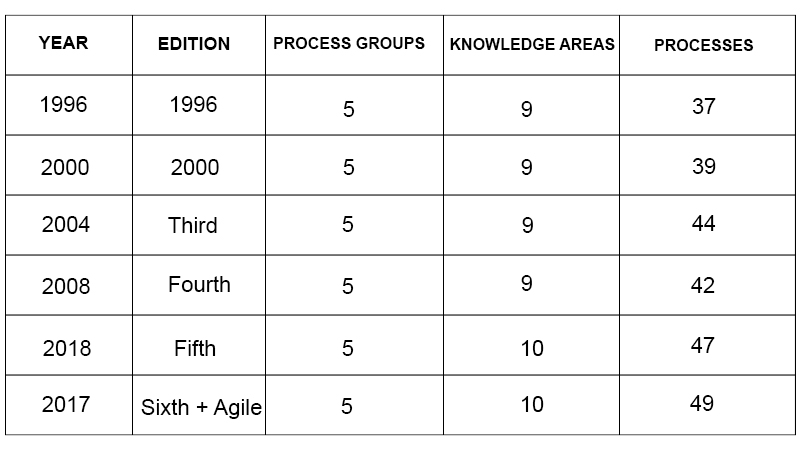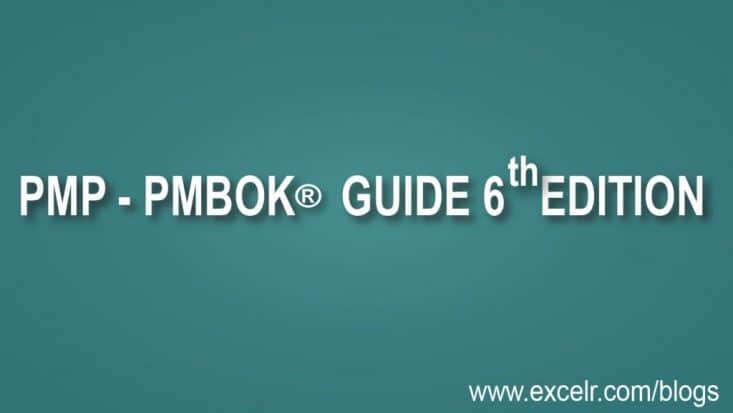The Project Management Body of Knowledge or PMBOK as we commonly know it; is considered to be the gold standard for standard terminologies for project management; a vital resource for concepts such as work breakdown structure and the critical path method. PMBOK represents guidelines supervised by Project Management Institute; the nonprofit professional organization engaged in offering project management certifications. The PMBOK guide is now in its sixth edition published in 2017. We look at the evolution of PMBOK and at what is new in PMBOK6.
Project management best practices
PMBOK has become the go-to resource for project managers across a range of industries and most importantly for as prep book for those opting certification exams (PMP and CAPM). The guide is constantly updated to keep pace with the evolving market trends and changing project management best practices. User inputs and suggestions are routinely incorporated in successive editions; traditional approaches are combined with agile practices so as to make each new publication better and more valuable.
Created by active practitioners, the PMBOK is dubbed as the guide by project managers for project managers. The first edition was published in 1996 in a bid to standardize practices and information relating to project management. The second edition published in 2000 reflected the growth in the field of project management; as did the third edition (2004). The 4th edition (2009) differentiated between project documents and project management plans and expanded the concept ‘triple constraints’ to encapsulate six concepts; viz. quality, scope, budget, schedule, risk and resources. The fifth edition (2013) included evolving concepts such as adaptive lifecycle and rolling wave planning.
As the table below demonstrates, each edition increased the number of processes in a progressive manner and in some cases the knowledge areas as well.

Each successive edition removed redundancies and /or inadvertent errors of previous editions.
PMBOK 6th edition – PMBOK6
After significant editorial work and review of materials contained in previous editions, PMBOK6 was published in 2017. There aresignificant ways in which the 6th edition is enhanced; additions and enhancements include:
-
The new edition reflects market trends and emerging practices; particularly those that have been observed in the intervening years between the 5th and 6th editions and there is a lot of new content in the first three sections of the guide
-
The 6th edition places greater emphasis on strategic and business knowledge and includes four new sections on each knowledge area
-
There is a new chapter on the role of the project manager and pointers on how to lead projects effectively in this edition
-
What is also new in this edition is the addition of sections called Approaches for Agile, Iterative and Adaptive Environments. These are added to each knowledge area along with directions on integrating these into project settings.
-
Manage Project Knowledge is a new segment added to the Project Integration Management section. This is aimed at integrating lessons learned from one project into other projects for the entire organization
-
There is also an added tweak that offers project managers the tools to offer quality assurance from within their project; without assistance from an outside agency
-
Since time cannot be managed, the Project Time Management section has been renamed as Project Schedule Management
-
Since resources include more than just people, the Project Human Resource Management segment now goes by the more inclusive title Project Resource Management
-
Project Communications Management now encompasses the paper output as well as video communications
-
There are significant changes in the Project Risk Management segment as well; addressing overall project risk and not just event driven risk
-
The Project Procurement Management section has had an international makeover
-
The view on Project Stakeholder Management now shifts to Stakeholder Engagement in the 2017 PMBOK6.










